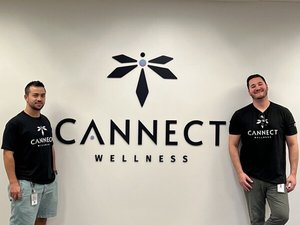Last year, B2B startups in Chicago received more tech funding than any other category, with 40 landing $319M in venture capital investments. Clearly, there is enormous opportunity in the B2B market. Yet, building a B2B company comes with its own unique challenges. The B2B customer base often needs very specific solutions to address large-scale problems, and those solutions must fit into entrenched processes and workflows.
Michael Bruns, CFO at Uptake, Hyde Park Angels Member, and Board Member at Synap and Jeremie Bacon, Co-Founder and CEO of Synap, are both serial B2B professionals who have cracked the code to delivering results to their customers. We asked them what entrepreneurs can do to replicate their success.
Michael and Jeremie laid out their key strategies in this video and the interview below.
For almost fifteen years, Jeremie has been developing B2B SaaS companies. One of the biggest lessons he’s learned is that the customer journey comes first. Specifically, from the very early stages of the company-building process, the management team must map out the customer journey. Specially, the team members must ask how the customer will interact with the business at every point in time.
“It's a lot easier when you're selling your software [to] quickly qualify people in and out based on your journey and what you want them to experience,” said Jeremie.
Building the Right Resources for B2B Companies from Hyde Park Angels on Vimeo.
Identifying your ideal customers will help keep you focused and eliminate some of the risk of feature creep or overextending your product capabilities. You will also better understand your future human, time, and capital costs. This is important in defining a sustainable pricing model.
“If you don’t [map out your customer journey], it becomes really hard to figure out how to price your service because you don’t know what you’re going to have to spend to drive that along the way,” said Jeremie.
Choosing your pricing wisely is essential to establishing sound unit economics, which as Michael stressed, is the biggest piece entrepreneurs need to focus on throughout the lifetime of the company. “Most of the companies I’ve seen fail, it’s not because they don’t have a great product. It’s because they have poor unit economics,” said Michael.
How can you avoid poor unit economics? For one, know what unit economics are. Specific, they are the direct revenues and direct costs of a product on a per unit basis. When you’re looking at your customer journey, think about what customers will pay for your product, as well as the costs of delivering the product to customers.
When you deliver that product to your customer, the journey isn’t over. Building a repeatable customer base requires paying special attention to service. While Michael served as CFO at Centro, he saw the company’s emphasis on providing raving fan service (inspired by the book Raving Fans by Ken Blanchard and Sheldon Bowles) create major value on both sides.
“If you want to build a sustainable and successful company, you have to go above and beyond to delight your customers in every interaction. Not only delighting your customers, but developing personal relationships with them, leading to long-term relationships [and enthusiastic] word of mouth advertising,” said Michael.
(Image via Wiki Commons)








